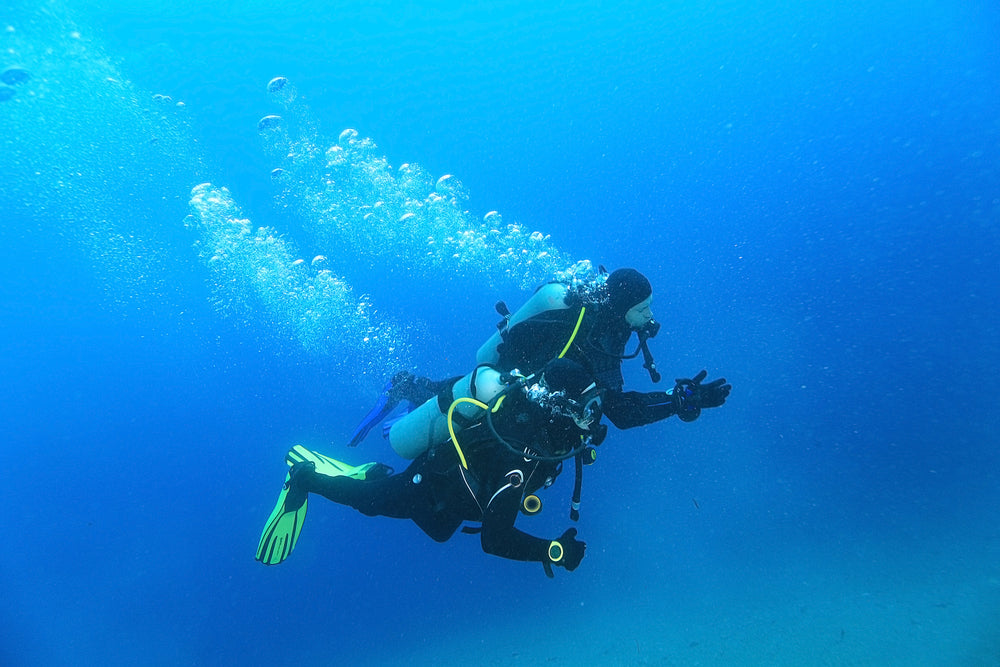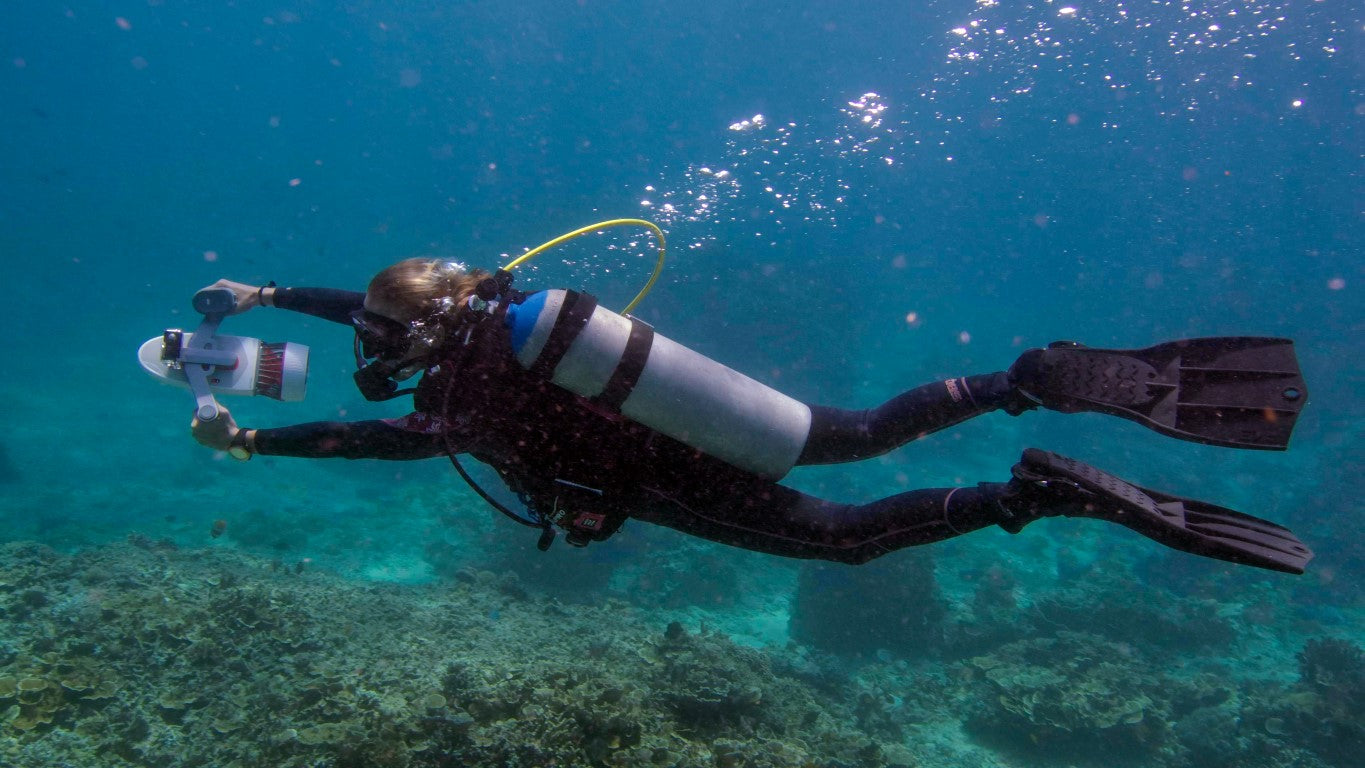Here’s a concise guide to refilling small scuba tanks with 6 key equipment options: 1) High-pressure air compressors (3000-4500 PSI) for safe fills, 2) Portable hand pumps (up to 3000 PSI) for emergencies, 3) DIN/Yoke valves to match tank connections, 4) Pressure gauges (accuracy ±5%) to monitor fills, 5) Filter systems removing moisture/oil, and 6) Fill whips with burst discs (rated 10% above tank pressure) for safety. Always prioritize compatibility and pressure limits to avoid overfilling.
Compressor Basics
Most small scuba tanks (like common 80 cu ft aluminum tanks) need 3,000–4,500 PSI fills, so your compressor must hit that range. A basic electric scuba compressor (e.g., Bauer Jr. II) costs around 5,000, while portable options like the Coltri MCH-6 run closer to 8,000–$12,000) but useful for remote fills.
Flow rate matters—a 4 CFM (cubic feet per minute) compressor takes ~20 minutes to fill an 80 cu ft tank from empty, while a 10 CFM model cuts that to ~8 minutes. Cheaper compressors (<$3,000) often max out at 3,300 PSI, forcing multiple stages for a full fill. Look for ISO 12402-3 certification to ensure air purity (CO below 10 ppm, moisture under 67°F dew point).
Key Compressor Specs
| Feature | Typical Range | Importance |
|---|---|---|
| Max Pressure | 3,300–4,500 PSI | Must match tank rating |
| Flow Rate | 4–10 CFM | Faster fills = less downtime |
| Power Source | Electric/Gas | Electric for shops, gas for field use |
| Noise Level | 70–90 dB | Lower is better for frequent use |
| Maintenance Cycle | Every 50–100 hours | Oil changes, filter replacements |
For hobbyists, used compressors (e.g., refurbished Bauer) can save 30–50% off retail, but budget
A two-stage compressor (like the Alkin W31) runs cooler than single-stage models, extending seal life by 2–3x. Always check output temperature; air above 120°F risks tank damage. For home setups, a 220V circuit (20–30 amps) is mandatory for compressors over 3 CFM.
Filters are non-negotiable—even the best compressor needs a 0.01-micron particulate filter and activated carbon stage. A full filter stack (particulate + CO + moisture) costs 500 annually but prevents costly tank corrosion. Skip "universal" filter housings; threaded DIN connections (G3/8" standard) leak less at high pressure.
Pro tip: If filling multiple tanks, a bank system (steel storage tanks at 5,000 PSI) slashes refill time by 50%. A 20 cu ft bank (2,000) can top off five 80 cu ft tanks before needing a compressor recharge. Just remember: banks need hydro testing every 5 years (100 per test).
Tank Valves Explained
The wrong valve can leak air at 1,000 PSI per minute or fail catastrophically under pressure. Most small scuba tanks use either DIN (G5/8”) or Yoke (A-clamp) valves, with DIN being the modern standard for tanks over 200 bar (2,900 PSI). A typical DIN valve costs 150, while a Yoke valve runs 120, but prices spike for titanium models ($250+).
DIN valves come in 200 bar (M25x2 thread) and 300 bar (M18x1.5 thread) versions. Using a 200-bar regulator on a 300-bar valve risks stripping threads, a
Key Differences Between DIN and Yoke Valves
| Feature | DIN Valve | Yoke Valve |
|---|---|---|
| Max Pressure | 300 bar (4,350 PSI) | 200 bar (2,900 PSI) |
| Leak Risk | Lower (metal-to-metal seal) | Higher (O-ring dependent) |
| Regulator Cost | 200 more than Yoke | Cheaper but less future-proof |
| Travel-Friendly | Yes (screws off for transport) | No (permanently attached) |
| Common Failures | Thread galling (1 in 500 fills) | O-ring blowouts (1 in 200 fills) |
H-valves add 60 to the tank price but let you run two regulators—useful for tech divers. Avoid J-valves (1970s vintage); their reserve lever mechanism jams in 40% of cases after 10 years.
The spindle (stem) seal fails every 5–7 years (8) and valve tool ($15)—without it, you can’t swap discs mid-trip.
Pro tip: If your DIN valve won’t seal, check for cross-threading (common after 100+ connects). A thread gauge ($12) saves hours of troubleshooting. For Yoke valves, lubricate the O-ring with silicone grease every 6 months to prevent cracks.
Travelers take note: European fill stations often refuse Yoke tanks above 232 bar (3,360 PSI). A DIN-to-Yoke adapter ($35) solves this but adds failure points (3 extra seals). For tech divers, left-hand valves (LH thread) prevent accidental gas mix-ups but cost 20% more.
Testing is non-negotiable. Hydrostatic tests (50) every 5 years check valve integrity. A failed test usually means replacing the valve seat ($40 part + labor), not the whole valve.
Final warning: Never over-tighten a DIN regulator—30 Nm (22 ft-lbs) is the max torque. Cranking harder bends the regulator’s first stage, a
Pressure Gauge Setup
A typical analog gauge costs 100-250, but the extra cost buys you ±1% accuracy versus ±5% with cheaper analogs. Most dive shops use 3.5-inch face gauges because they're easier to read at depth, with markings every 200 PSI up to 5,000 PSI capacity.
Calibration drift is real - even high-end gauges lose about 50 PSI of accuracy per year. That's why professional fill stations recalibrate every 6 months ($25-50 per gauge), while recreational divers should check theirs annually against a known good gauge. Digital models with auto-calibration features maintain accuracy longer but consume batteries (typically 2x CR2032 every 18 months).
For multiple tank setups, dual-head gauges ($150-300) let you monitor two tanks simultaneously, crucial for technical diving. These specialized gauges have dual bourdon tubes that operate independently, with failure rates under 2% even after 5,000 pressure cycles. Avoid cheap "twin gauge" units where one movement drives both needles - if it fails, you lose all pressure readings.
Gauges installed vertically with dial facing upward last 30% longer than side-mounted ones because moisture drains away from the movement. In humid climates, adding a moisture trap ($15-30) between the tank and gauge prevents internal fogging that causes 12% of gauge malfunctions in tropical regions.
A single drop from waist height can throw off calibration by 300 PSI or more. Rubber boots (90-150) survive most dive boat abuse. For cave divers, glow-in-the-dark dials** add $25 to the price but prove invaluable when lights fail.
When troubleshooting, remember that needle bounce exceeding 5% of max pressure indicates either a failing gauge or unstable compressor output. If your 3,000 PSI gauge bounces beyond 150 PSI during fills, replace it immediately - this symptom precedes complete failure in 80% of cases. For digital models, erratic readings usually mean the pressure sensor needs replacement ($40-80 repair cost).
Pro tip: Always carry a portable backup gauge ($50-100) when filling remote tanks. The compact 1.5-inch models fit in any gear bag and can save a dive trip when primary gauges fail. Just remember to check their calibration against a known source every 6 months - field conditions accelerate wear by 3x compared to shop use.
Filling Safety Steps
A standard 80 cu ft aluminum tank at 3,000 PSI stores enough energy to launch a small projectile over 100 feet if the valve fails. That’s why proper filling procedures aren’t optional—they’re engineered safety protocols backed by decades of dive industry data.
The first rule is never exceed the tank’s working pressure, which is stamped on its neck (usually 3,000 or 3,300 PSI for aluminum, 3,500+ for steel). Overfilling by just 10% (e.g., 3,300 PSI in a 3,000 PSI tank) increases the risk of stress fractures by 22%, according to hydrostatic testing labs. Always verify the burst disc rating—it should be 5/3 of the tank’s working pressure (e.g., 5,000 PSI for a 3,000 PSI tank). If the disc blows during filling, shut off the compressor immediately—this means either overpressure or a faulty valve.
Filling too fast heats the air inside—a tank that feels warm to the touch (over 120°F) indicates excessive compression heat, which can weaken the tank’s structural integrity. The safe fill rate for most small compressors is 1.5–2 minutes per 100 PSI, allowing gradual cooling. If filling multiple tanks back-to-back, wait at least 10 minutes between fills to let the compressor cool down.
Contamination prevention requires a three-stage filtration system:
- Particulate filter (0.01 microns) to catch dust and compressor wear particles
- Carbon monoxide scrubber (reduces CO to <10 ppm)
- Moisture separator (dew point below -50°F)
Filter lifespan depends on usage—replace particulate filters every 50 fill cycles, CO scrubbers every 6 months, and moisture separators when the desiccant changes color (usually every 3–4 months with regular use).
Visual inspections save lives. Before connecting any tank, check for:
- External corrosion (pitting deeper than 0.010 inches fails hydro)
- Dents or gouges (any deformation over 0.5 inches long requires testing)
- Thread damage (stripped or crossed threads on DIN/Yoke valves)
Tanks that haven’t been used in 2+ years need VIP (visual inspection plus hydro) before filling—internal corrosion can hide even in “clean” looking tanks.
Emergency procedures every filler must know:
- If a tank starts vibrating violently during filling (harmonic resonance), stop immediately—this indicates imminent valve failure
- For thermal runaway (compressor overheating), use the emergency shutoff—don’t just unplug (arcing can ignite oil vapors)
- Leaking burst discs require full valve replacement—never try to patch them
Pro tip: Keep a fill log tracking each tank’s:
- Fill date/time
- Starting/ending PSI
- Compressor runtime
- Filter change dates
Most dive shops archive these logs for 7+ years—home fillers should maintain them for at least 3.
Final reality check: Aluminum tanks typically last 20 years/10,000 fills (whichever comes first), while steel tanks can go 30+ years with proper care. Retire tanks showing neck thread wear exceeding 10% of original depth or those failing 2+ hydro tests consecutively.
Maintenance Tips
A well-maintained aluminum tank lasts 20+ years and 10,000 fills, while neglected ones can become unsafe in as little as 5 years. Steel tanks fare better (30+ years), but only if you follow strict care protocols.
Always store tanks with 200–500 PSI of air to prevent humidity ingress. Tanks left completely empty in humid climates can develop 0.005–0.010 inches of internal pitting per year, enough to fail hydro testing after just 3 years. For divers in coastal areas, annual visual inspections (VIPs) are mandatory—salt air accelerates corrosion rates by 40% compared to dry climates.
Aluminum tanks need testing every 5 years, steel tanks every 3–5 years depending on local regulations. A failed hydro doesn’t always mean the tank is dead—60% of "failed" tanks just need valve work or minor polishing to pass retesting (100 extra). Never skip this—a ruptured tank at 3,000 PSI releases energy equivalent to 0.5 lbs of TNT.
Filter systems need scheduled replacements:
- Particulate filters (0.01 micron): Change every 50 hours of compressor runtime
- CO scrubbers: Replace every 6 months regardless of use
- Moisture separators: Swap desiccant when it turns pink (every 3–4 months with weekly fills)
Cheap filters (50) seem like a bargain until they fail—contaminated air causes 15% of regulator malfunctions and voids most tank warranties.
If storing for 6+ months, purge the tank with dry nitrogen ($30 per purge) to eliminate moisture.
Pro tip: Mark your tanks with fill cycle counts using a paint pen. Most tanks show wear at predictable intervals:
- 2,000 fills: Check valve threads for wear
- 5,000 fills: Inspect tank neck for stress marks
- 8,000 fills: Consider retirement for aluminum tanks
Synthetic compressor oil (5,000 compressor into a scrap metal candidate in under 2 years.
Final reality check: Maintenance costs 300 annually per tank, but that’s cheaper than the $2,000+ for a new tank—or worse, medical bills from equipment failure. A simple monthly 10-minute check (valve function, external corrosion, burst disc integrity) prevents 90% of dive emergencies.






Leave a comment
All comments are moderated before being published.
This site is protected by hCaptcha and the hCaptcha Privacy Policy and Terms of Service apply.